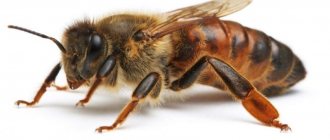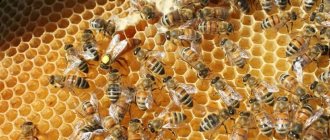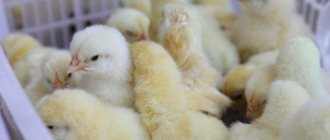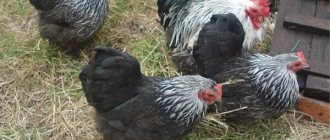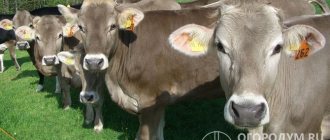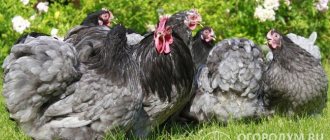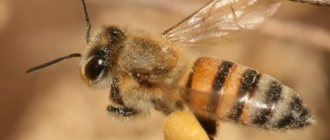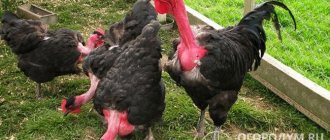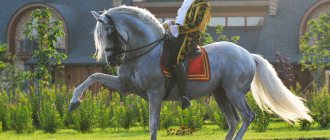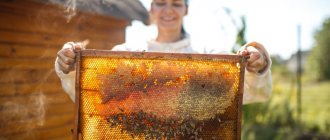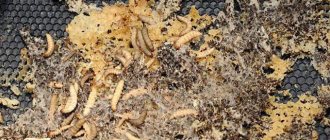Buckfast bees are the result of more than half a century of selective breeding, which resulted in the development of a productive, friendly variety of insects with a low tendency to swarm.
The high fertile ability of the mother and the preservation of this function throughout life determined the popularity of the species among beekeepers. More than 10 varieties of the Buckfast breed are known, but all of them have one significant drawback, which is the lack of frost resistance of the species, which limits the possibility of using these bees in regions with cold climates.
Description of the breed
In England, at the turn of the 18th and 19th centuries, the population of local bees was practically destroyed by the tracheal mite . In the county of Devon, at Buckfast Abbey, the beekeeper monk Karl Carchre (Brother Adam) noted that a cross between local and Italian bees survived the epidemic with partial losses. The monk began searching for genetic material in the Middle East, Europe and North Africa.
Buckfast Abbey in England
As a result of many years of work, he bred a breed of bees with the same name of the abbey. The breed was productive , did not show aggressiveness, rarely swarmed, and had good immunity.
On a note ! In beekeeping, the Buckfast bee breed occupies a priority place in breeding. The only drawback of the variety is poor tolerance of low temperatures by insects. for apiaries located in cold climates.
Table. Characteristics of the buckfast bee.
| Weight | The average weight of a worker bee is within 120 mg, the weight of an unfertilized queen is about 195 g, ready for laying 215 g. |
| Appearance | Slight hairiness mainly on the back of the buckfast, the belly on the underside is smooth without lint. The main background color is between brown and yellow, with obvious stripes below the back. The wings are light, transparent, in the sun with a dark beige tint. Paws are glossy, black. |
| Proboscis size | Average length – 6.8 mm. |
| Behavior model | Bees are not aggressive towards family members and others. When the lid is removed from the hive, they go deeper and rarely attack. work with your family without camouflage clothing. |
| Winter hardiness | This is the weak side of the breed; bees cannot prepare the hive for winter on their own; additional insulation is required on the part of the beekeeper. |
| Honey collection process | Floromigration in Buckfast bees is high; they do not give preference to one honey plant and constantly fly from one species to another. |
| Level of oviposition of queens | The queen lays eggs continuously throughout the day, the average is about 2 thousand. |
A distinctive feature of buckfast bees from other varieties of bees is their body structure: it is flatter and more elongated. The color is darker, there is a yellow color, the paws are black; in other breeds they are brown. In a hive on a frame , movements are slow, unhurried, activity manifests itself when collecting nectar , so the breed is one of the most productive. It rarely stings, does not attack, and calmly coexists with humans.
Karnika or karpatka?
This is a question many novice beekeepers ask. Of course, it is simply impossible to give a 100% accurate answer - the work style of each beekeeper is unique and individual, so for some it will be better to work with one breed, for others with another. Let us turn to the following comparative characteristics and see which breed is superior to the other and in what ways:
Queen bees
Size. As for size, the insects here do not differ radically and are practically no different from other breeds. However, the carpathian uterus is slightly larger in size than the carnika uterus, which weighs only 200 mg. Sluggishness. Karnika is characterized by increased leafiness: previously breeders did not consider this a disadvantage. Karpatka swarms noticeably less. Oviposition. The uterus of the carpathian fish is very active, lays a large number of eggs and is not picky about external conditions. But the carnika is very harmful: if nectar suddenly stops getting to it, it immediately stops laying eggs. Theft. A serious disadvantage of the karpatka is its increased tendency to theft, which is almost impossible to eradicate. Karnika bees are not thieves, so the beekeeper will not have any problems here. Wintering. The wintering of the Carpathians is almost always successful and with few losses. Wintering at the carnika is still more difficult, and the level of pestilence during the hibernation period is very high. Morbidity. On average, both bees have fairly good immunity. However, carnika is more susceptible to nosematosis, which can significantly impair the quality of its work. Extraction of honey. Both breeds produce a rich harvest of honey and work actively during the bribe period.
Deciding which breed is better is quite difficult. Experienced beekeepers recommend trying to work with one and another breed for 1 season - from spring to spring, in order to make a choice based on personal experience.
What do buckfast uteri look like?
In the photo there is a buckfast queen, she is much larger than worker bees, the aircraft is less developed. It has a lighter color, a long abdomen, a light brown color, and a yellow tint that is much greater than that of working individuals. A young unfertilized individual is capable of flying out of the hive. During the reproduction process, the queen does not leave the hive and does not rise up. Does not leave the frame until it is completely filled.
Laying continues throughout the year. The queen bee buckfast builds a nest only on the lower tiers of the hive; the nest is small and compact. The reproductive process continues throughout the day, the queen lays up to 2 thousand eggs.
Attention ! The family is constantly growing and requires a larger hive and a constant supply of empty frames.
Close-up view of queen bee
Maturation of uterine eggs
Marking the queen bee
Queen mother of the bee family
to obtain a buckfast queen bee from brood . Out of a thousand young individuals, about 20 will be used for breeding, preserving the genetic characteristics of the buckfast, and then with the condition that the drone will be purebred. Therefore, the price offer for bee packages with Buckfast is high. Breeding farms involved in breeding this breed are located only in Germany.
Swarminess
Excessive swarming behavior of bees occurs for several reasons. This mainly occurs as a result of the lack of free space in insects. Because of this, the queen bee stops laying eggs, and the workers give up building new honeycombs. Due to the low workload, the bees begin to collect nectar, which is not yet available in the winter or spring, after which they stop flying out of the hive.
If all these signs are present in the apiary, the individuals are ready for swarming. Preventive methods to prevent it will be:
- partial expansion of the hive space by increasing its area and installing additional frames;
- placing the larvae in a compartment distant from the uterus.
If you follow these tips, the bees will stop swarming and will be busy with useful work.
In order to select from representatives of buckfast or frost-resistant carnica, you need to take into account that Krajina bees have a tendency to swarm, so buckfast individuals are better protected.
Buckfast breed lines with descriptions
The Buckfast breed includes a number of varieties, which are significantly smaller than other bee breeds. In terms of external characteristics, the subspecies are practically the same; they have different functional purposes.
- For breeding work they use B24,25,26 . The insects have completely preserved the genetic characteristics of the first representatives of the breed: productivity, lack of aggression, constant increase in population . Both the female line (queens) and the male line (drones) are suitable for selection.
- In breeding work with B252 , only drones are used; in the process, the immune system is adjusted, and resistance against diseases is introduced into the new offspring.
- Line B327 , not used to preserve the breed, these are neat working bees, whose hive is always clean, the honeycombs are lined up in an even line, the cells are carefully sealed. Of all the subspecies, these are the most peaceful representatives.
- For industrial purposes they use A199 and B204 , the distinctive feature of which is long-distance flights. Bees with high flora migration fly out early in the morning, not paying attention to weather conditions. Nepotism is strong; all adults raise brood.
- In subspecies P218 and P214, the Far Eastern bee is present in the genotype. These are the strongest representatives in terms of immunity and productivity, but also the most aggressive.
- The German line B75 is used commercially for the formation of bee packages and has all the characteristics of buckfast.
Expert opinion
Ponomarev Sergey Stepanovich
Beekeeper with 30 years of experience, Candidate of Technical Sciences
All Buckfast lines have in common: high reproduction, ability to work, early departures, calm behavior.
Disease resistance
When choosing a frost-resistant carnica or an economical buckfast, it is important to take into account that they have a tendency to diseases, for which it is better to carry out preventive work.
The Krajina representative has an increased risk of being affected by ascospherosis.
Ascospherosis is an infectious disease caused by a white mold. Infection occurs by penetration of the fungus through the insect's esophagus, after which harm is caused to the offspring (open and sealed larvae). It is difficult to combat a severe form of this disease, so it is necessary to identify it as early as possible to avoid serious losses among individuals. Early symptoms: the presence of a white coating on the combs, offspring and throughout the hive.
Buckfast is protected from ascospherosis, but is prone to varroatosis.
Varroatosis is a disease caused by the varroa mite. It affects the entire family: from the uterus to small larvae and feeds on the blood of its carriers. Its reproduction occurs at a rapid pace in the form of oviposition. Early symptoms do not appear in any way, so varroatosis is very difficult to identify, and, subsequently, the bees become aggressive and nervous.
To exclude such a development of events, it is recommended to carry out emergency drug treatment and prevention.
Distinctive characteristics of Buckfast bees
Buckfast bees differ from other breeds in a number of undeniable advantages.
- When working with bees, you do not need special equipment or camouflage clothing; the insects calmly go deep into the hive , do not interfere with the work of the beekeeper , and are non-aggressive.
- The breed does not leave empty cells on the combs; they are rationally filled with honey and brood.
- Backfast is neat, there is no excess propolis foundation debris . Honeycombs with honey are never placed near frames with babies.
- They are demanding about the purity of the breed; if the drones are not purebred, the next generation will lose the characteristics characteristic of buckfasts.
- Buckfasts never swarm, are distinguished by early flights, and feel comfortable in foggy, damp weather, which is as close as possible to the climate of their historical homeland.
- The uterus has a high reproductive capacity.
- Over many years of work, the breed's immunity was brought to perfection; individuals are immune to almost all infections, except for the Varroa mite .
Insects are very prolific
Advantages
The obvious advantages of Buckfast bees over other breeds are:
- Rapid increase in the number of inhabitants of the hive. Possibility of separating families.
- Endurance, allowing to process large areas of honey-bearing areas. Insects work in almost any weather: rain, fog, wind. In search of nectar, they are able to fly long distances.
- Resistance to diseases such as ascospherosis (fungal infection), nosematosis, acarapidosis (micromit infection). The latter became possible thanks to the selection and breeding of individuals with a small trachea.
- Convenient for the beekeeper the settlement of bees and the location of nests. As a rule, nesting sites can be found at the very bottom, but honey and beebread are deposited on top, which makes access to the product easier.
- Possibility of breeding insects to create autumn and spring honey.
- Cleanliness and ergonomics of the hive space.
- The Buckfast breed is not susceptible to intestinal diseases. They leave behind much less propolis than other types of insects.
Disadvantages of Buckfast Bees
The species has few disadvantages, but they are quite serious. Bees cannot tolerate low temperatures. Experimental breeding of buckfast in northern climates, according to reviews, gave negative results. With good insulation , most of the family died. Therefore, the breed is not suitable for breeding in the north.
On a note ! It is difficult to maintain the genetic purity of the species. The queen fully lays eggs for two years. In the third year, the clutch decreases significantly, which means honey productivity decreases. The old individual is replaced with a fertilized one. This is where the problems begin with the Buckfast breed. You can purchase a genetically pure queen only in Germany for a considerable sum.
Where can I buy? Price
To prevent degeneration of the breed, the quality of the queen bee is important. However, it is not so easy to get it. Purebred individuals remained only in Germany. From there they are imported to the east, often through semi-legal routes.
The cost of a uterus ranges from 100-300 euros (even more expensive after artificial insemination).
Often beekeepers buy F1 (first generation) queen bees, which show good productivity and have properties inherent to the breed. Such individuals are cheaper. They can be ordered from bee farms through online stores in the Russian Federation, Belarus, and Ukraine.
Features of keeping buckfast bees
According to reviews from beekeepers with many years of experience, the Buckfast bee breed requires special attention when keeping and breeding. For full productivity, insects need to create special conditions that take into account the distinctive features characteristic of the Buckfast breed.
Features of keeping buckfast bees
Bees create strong, numerous families ; they need a large space; the more space and free frames in the hive, the larger the clutch. As the family grows, the hives are replaced with more spacious ones, and new empty frames are constantly substituted.
Note ! It is impossible to adjust the growth of the family, they are not divided, the brood is not removed, these actions will directly affect productivity. The swarm is intensified, the bees are fed backfast.
I'll add a few thoughts out loud:
This text shows the level of cooperation between scientists, public organizations and sandstones in Switzerland... Level of research and reports. Nobody foams at the mouth to defend one specific bee like ours, in fact, whose reputation is not at the highest level and we have to call everything else whatever and whatever... By the way, please note - line C (Buckfast, Punisher and Ligustiku) is classified as Eastern European bees As can be seen from the presentation slides, genetic studies of Swiss bees have identified Buckfast as a separate breed of bees. Positive results of genetic analysis are noted since the high biodiversity of populations reduces the risks of inbreeding. Colleagues have something to look forward to. Post your thoughts and comments below.
Wintering bees buckfast
When the temperature drops, insects gather in a ball , and a place for wintering is chosen on the empty honeycombs from which they emerged. The central part is looser, the outermost part is dense. Individuals periodically change places. This measure is necessary for heating and access to food. Insects need energy to raise the temperature in the hives to +300 C at the time the brood appears.
Expert opinion
Ponomarev Sergey Stepanovich
Beekeeper with 30 years of experience, Candidate of Technical Sciences
The buckfast family consumes about 30 g of honey per day to maintain the temperature in the hive.
This factor is taken into account before wintering ; if necessary, the family is fed with syrup. Make sure that the hive is well insulated. After wintering the buckfast outside, in the spring at +120 C the bees begin to fly around . If the wintering was successful, the hive will have frames with brood and no nosematosis .
Behavior
Both the Karnika and the Buckfast are characterized by calm and non-aggressive behavior. This only applies to purebred breeds. Even when inspecting the frames in the hives, the beekeeper does not need to use a special protective net or smoker, because they do not react to external stimuli.
This feature is important, because when systematically transporting hives to places with the largest concentration of honey plants, bees do not interfere with humans and make it possible to carry out the move calmly and without problems.
Buckfast bee reviews
Sergey Sorokin, 42 years old, Voronezh
I heard a lot of positive feedback from beekeepers about Buckfast, last year I purchased a bee package and assigned insects to a spacious hive. All characteristics of the breed were fully confirmed. During the season, the family tripled in size, I did not touch it for the winter, I will plant it in the spring after acquiring a fertilized uterus.
Maxim Dorokhov, 38 years old, Moscow region
I had my doubts for a long time before buying a Buckfast, the price is not low, the frost resistance of the breed is weak. I decided and bought it. The costs were fully recouped. The uterus remained overwintered for the third winter; in others, it was changed every year in the fall. I'll see what the laying will be next year.
Oviposition
A peculiarity of Krajina insects is their early spring activity. During this period, the queen bee lays up to 2000 eggs in one day. The rapid growth rate of insect numbers is reduced to a minimum during active nectar collection. The bees use it to fill the free compartments in the honeycombs, thereby minimizing the increase in the number of eggs.
Differentiation of priorities allows you to produce honey in large quantities and multiply intensively when you do not need to expend a lot of energy. The buckfast species is unique due to the fact that the purebred individuals depend on a high-quality and effective queen bee, which is difficult to obtain. According to statistics, out of 1.5 thousand larvae, there will be no more than 35 purebred representatives. This is very little. Therefore, the cost of a breeding queen reaches 500 euros per piece.
There are different ways to determine the quality of an individual in the early stages, but these methods cannot be performed at home due to the use of expensive and precise specialized equipment.
